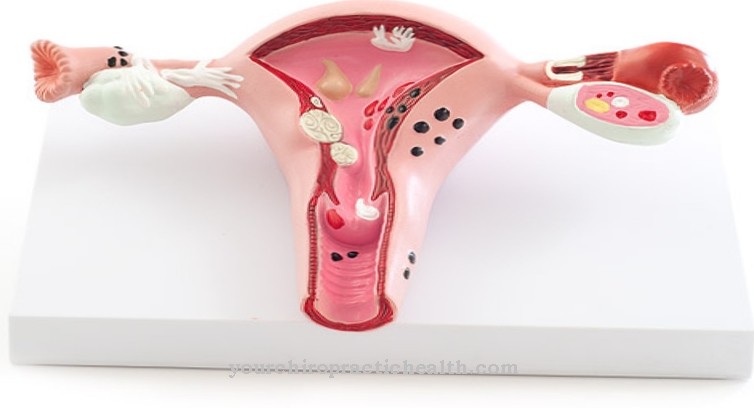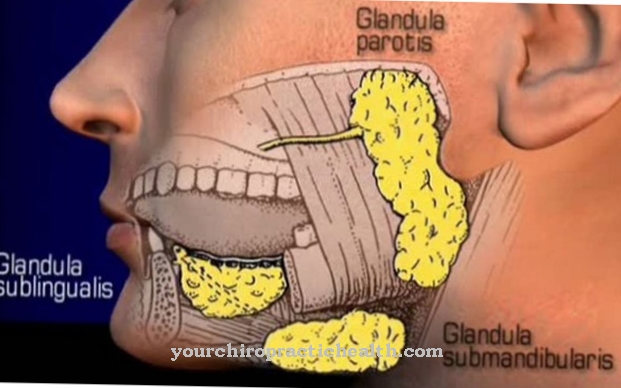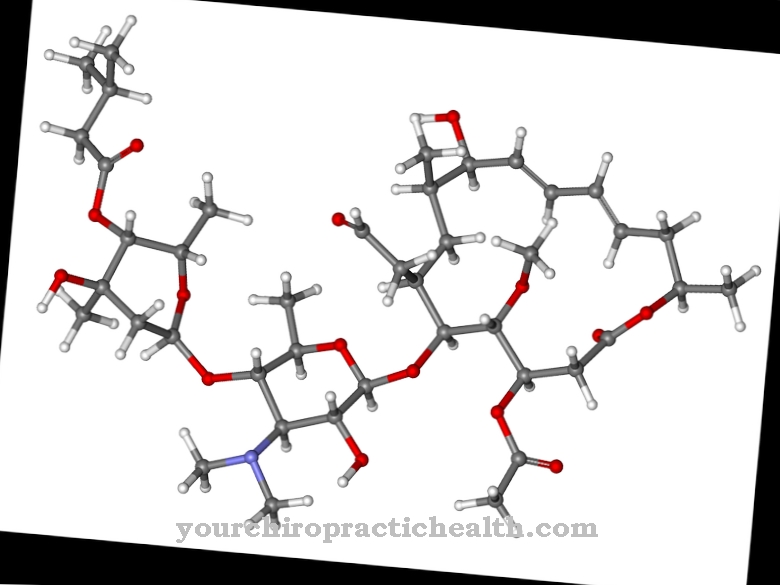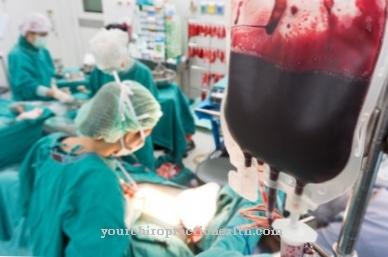Teratomas are tumor-like structures that are relatively rare and still cause horror in many people today because of their strange appearance. Most of them are benign tumors.
What are teratomas?

© Minerva Studio - stock.adobe.com
Teratomas are congenital tumors that contain one or more rudimentary tissue structure (s). They arise from the germ cells (stem cells) of the ovaries and testes and are usually located there. However, they can also occur elsewhere (central nervous system, neck, tailbone, abdominal region, brain).
The teratomas located in the testes are malignant, those located in the ovaries are usually benign. Teratomas usually only occur on one side. They can arise from just one cotyledon (dermoid cyst) or from several cotyledons. Dermoid cysts contain only skin tissue, sebum and sweat glands, and hair follicles. If the tumors consist of the cells of several cotyledons, they still have teeth, muscle tissue and other structures.
Such differentiated forms are also called mature teratomas. However, the immature (malignant teratomas) often only contain embryonic epithelial tissue. The greatest number of germ cell tumors arise from ectodermal and neuroectodermal tissue and develop skin, hair, sweat and sebum glands and nerve tissue. Mesodermal forms with bones, muscles, teeth and endodermal teratomas are much less common. They are equipped with rudimentary thyroid, pancreas, and pituitary tissue.
In very rare cases, the cysts even contain entire organs (hands, feet, eyes) or a structure that resembles a deformed fetus (homunculus). Germ cell tumors are usually cysts and have a cavity filled with yellow sebum or mucus. There are also solid teratomas. They are completely filled with tissue.
causes
The cause of the development of teratomas is likely that during the development of the embryo in the womb, embryonic stem cells become independent and settle elsewhere in the body. However, science assumes that germ cells that have been carried over can also become teratomas.
This can happen, for example, during an operation or if the adult is injured: The tissue is accidentally torn out with it and grows again in another place, where it gradually expands. However, the term "twin ulcer", with which the teratoma is sometimes named, is misleading: a teratoma is not a rudimentary twin in the body of its brother / sister, since it consists of embryonic stem cells and not sex cells.
Symptoms, ailments and signs
Symptoms and the discovery of the teratoma usually only appear in adulthood. However, teratomas of considerable size are sometimes found in the body of infants. The nature of the symptoms depends on where the germ cell tumor is located and what size it has already developed.
With teratomas in the abdomen, the person concerned will notice an increase in the circumference of the abdomen. If they are further down, the lower abdomen bulges. Urination and bowel movements may be disturbed. If the growth presses on nerves due to its growing expansion or if it pushes organs aside, there is an increased feeling of pressure and pain. This can be the case, for example, with a dermoid cyst.
Malignant teratomas enlarge faster and even grow into neighboring organs. Then there can also be an irregular monthly cycle. A twisting of the handle or a capsule rupture cause extreme abdominal pain and can even be life-threatening if the contents of the tumor drain into the abdominal cavity and cause peritonitis there. In rare cases, bleeding into the abdomen and detachment of the tumor can occur.
Teratomas that are found in the brain are associated with chronic headaches, dizziness, and symptoms typical of common brain tumors. If the teratomas in the ovary contain a high proportion of thyroid tissue, this can lead to an overactive thyroid in the patient (goiter ovarii). About one percent of germ cell tumors later become malignant.
Diagnosis and course of disease
Abdominal teratomas are detected by palpating the site. To be sure what exactly it is, an ultrasound and, if necessary, an X-ray examination will be carried out. If the teratoma contains calcareous substances such as teeth, the doctor can already know at this stage of the examination which form of the germ cell tumor is present.
However, he only receives complete certainty through a tissue removal, which is carried out under local anesthesia. A tiny piece of tissue is removed from the affected area and examined histologically. Blood tests show a strong increase in the tumor markers bHCG, AFP and / or LDH. Most teratomas are only safely diagnosed as such after they are already fairly large and causing symptoms.
Complications
A teratoma can lead to a variety of symptoms. Above all, the exact position and size are very decisive for the complications and complaints. Those affected suffer primarily from problems with bowel movements and urination. This can lead to a burning sensation or pain in general. Many of those affected suffer from mental health problems or from depression.
Women can also experience irregular periods due to illness, and thus mood swings. Sometimes abdominal pain occurs and the peritoneum itself can become inflamed. In addition, those affected by teratoma suffer from severe dizziness and a malfunction of the thyroid gland. This usually has a very negative effect on health and can possibly also reduce the life expectancy of the patient.
In most cases, a teratoma is surgery. The growth can be removed. There are no complications. However, some patients are dependent on chemotherapy, which can lead to side effects. After a successful treatment there are no more symptoms.
When should you go to the doctor?
If swelling or general body shape irregularities can be noticed in newborns and infants, the observations should be discussed with a doctor. With a teratoma, there are visual changes in the area of the genitals. In males, there is swelling of the testicles and in female growths in the ovaries. If there are any abnormalities in these body regions, it is necessary to consult a doctor immediately.
Since in most cases the first irregularities occur in adulthood, a doctor is needed as soon as the congenital disorder is noticed. Irregularities in going to the toilet, abnormal urination or disturbances in bowel movements are signs of a health impairment. They are to be examined and treated.
If young girls or women experience menstrual disorders or abnormally severe abdominal pain, a doctor is needed. If boys or men notice visual irregularities in their testicles, they should also see a doctor. Headache, dizziness, or unsteady gait can also indicate a teratoma. A doctor should be consulted if hoarseness, problems swallowing or problems with the coccyx occur. Concentration disorders, memory impairments and inconsistencies in coordination or general functional disorders must be examined by a doctor as soon as possible.
Therapy & Treatment
Treatment of the teratoma depends on whether it is benign or malignant - which can be determined from the tissue sample taken. If it is benign, it is sufficient if it is completely surgically removed. To do this, the ovary is peeled off with the help of a laparoscopy.
If a malignant teratoma is present, not only the actual tumor, but also the affected neighboring tissue and the nearby lymph nodes are removed. In men, the affected testicle is removed. This is followed by a cisplatin-based chemotherapeutic treatment. The prognosis in such cases is favorable. However, the malignant teratomas that occur in some girls and young women mostly react negatively to chemotherapy or radiation therapy.
prevention
Prevention is not possible because teratomas arise spontaneously.
Aftercare
If the teratoma was surgically removed, the length of time that the patient has to stay in hospital varies depending on the patient's condition. The size of the germ cell tumor plays a decisive role. Other important factors are the location of the teratoma and the general health of the patient.
If it is just a small teratoma, such as a dermoid in the woman's ovary, an outpatient removal is often sufficient so that the patient can then return home. In most cases, those affected have to stay in the clinic for one to three days after the operation, which is usually a laparoscopy.
However, if a teratoma is present on a large scale, this requires a more complex procedure such as an abdominal incision, which means that the duration of the hospital stay is longer. Patients often stay in the hospital for up to a week. Babies or young children who have had a tailbone teratoma surgically removed will also need to stay in the hospital for a few days, although the length of time will vary. Sometimes chemotherapy takes place afterwards.
Because a teratoma can recur despite successful treatment, which is usually the case after two to five years, regular follow-up in the form of check-ups is recommended. Thereby u. a. a computed tomography or a chest x-ray examination is carried out in order to detect a possible relapse early and treat accordingly.
You can do that yourself
Benign teratomas are surgically removed. The usual measures apply after a surgical procedure. Recovery can be supported by properly caring for and caring for the wound. If symptoms occur again that indicate a relapse, the doctor must be informed. Further treatment may be needed.
Teratoma patients should consult their family doctor closely, as a teratoma can cause hormonal symptoms. Sweating and psychological discomfort indicate an influence on the hormonal balance and must be treated accordingly in order to avoid serious complaints and complications. Exercise and avoidance of stress also help recovery. Compensation must be created, especially after major operations, which are also mentally stressful.
Those affected should also turn to a self-help group.Friends and acquaintances provide additional support in the case of cancer. In malignant teratomas, the body is heavily stressed by chemotherapy and appropriate countermeasures are necessary. Sport and a nutrition plan are important components of the accompanying treatment. The doctor will consult other doctors for this purpose and instruct the patient to strictly adhere to the measures.


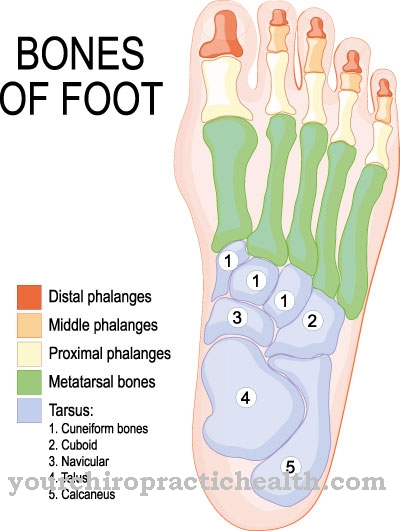


.jpg)





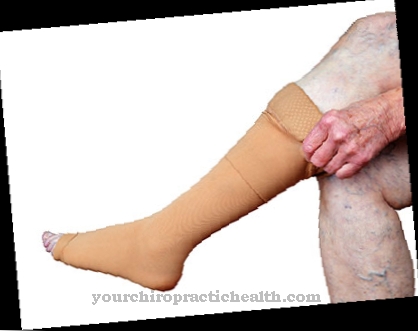
.jpg)



.jpg)


